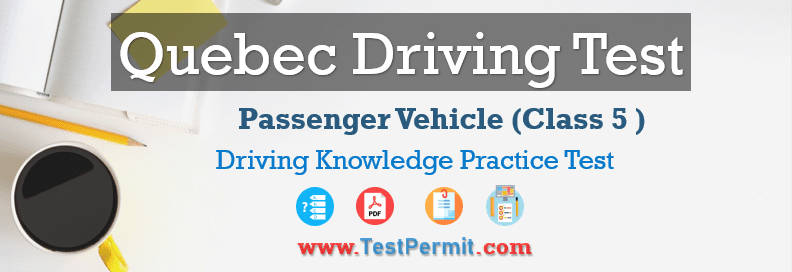SAAQ Class 5 Knowledge Test 2025 (50 Question Answers): Try our 50 Quebec Driving Knowledge Question Answers for passenger vehicle (automobile). To obtain a permit to provide remunerated passenger transportation by automobile, you must have held a valid Class 5 driver’s licence for at least one year, have completed the required training and pass a test.
A Class 5 licence authorizes its holder to drive
- a motor home also known as a recreational vehicle (RV)
- a tool vehicle
- a service vehicle
- a moped or motorized scooter
- a tractor
- a 3-wheel T-Rex- or Slingshot-type vehicle
You will take a test that covers: the Highway Safety Code signs and signals, behaviours and techniques applicable to driving a passenger vehicle (specialization)
SAAQ Class 5 Knowledge Test 2025
| Test Name | SAAQ Québec Driving Licence Knowledge Test |
| Language | English |
| Licence | Passenger Vehicle (Class 5) |
| Total Questions | 50 |
| Test Type | Sample Question Answers |
| Test Preparation | Theoretical Exam/ Written Exam |
| Province | Québec |
| Topics | Driving Knowledge |
See also:
- SAAQ Passenger Vehicle Knowledge Practice Test
- SAAQ Class 5 Knowledge Test 2025
- Québec Class 5 Driving Theoretical Exam Test
- SAAQ Road Signs Practice Test
